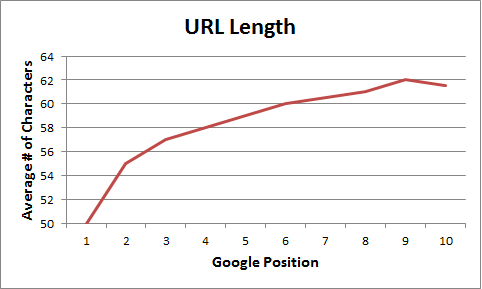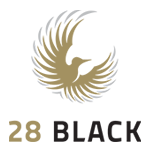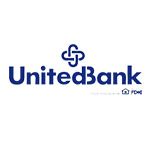On-Page SEO Services Crafted for Your Content Strategy
What is On-Site/On-Page SEO?
On-site SEO refers to what Google sees when it crawls your site content. On-page SEO is the optimization of an individual web page, collectively to serve on-site SEO. It’s important that Google can easily identify keyword cues to determine what your page is about, so it can return your page when users search online.
In order to make sure your pages are giving off strong on-page SEO cues to Google, you need to look at various factors.
Must-Haves for On-Page SEO
The URL Slug
Each page of your website must have a unique URL slug, meaning the exact address of your webpage. To adhere to Google’s best practices, your URL slug should be relatively short and to the point, while still including your primary keyword.
For example, a URL like aismedia.com/my-post is easier for Google to understand than aismedia.com/1/12/2016/blog/category/this-is-the-title-of-my-blog-post.
In fact, according to Google’s Matt Cutts, after 5 words in your URL:
“[Google] algorithms typically will just weight those words less and just not give you as much credit.”
Below is a trend line for the optimum URL length found at each page #1 position on Google.

Headings and Subheadings
Using keywords in your headings and subheadings indicates to Google what the page’s content is about.
Page Title & Meta Description
The page title is what shows at the top of the tab in your browser. The meta description is what shows in a search engine results page that provides a bit of detail to the user about the kind of information they can find on your site.

Google crawlers initially understand a page’s content using page title. If your site is missing a page title, the search engine will pick one for you, but it may not be how you want to present your company online. In a Google search, page titles display as a blue link text to represent your listing. These tags must be relevant and accurately describe the page itself. Optimized page titles do not exceed 60 characters and should include your brand name at the end. Below is the optimal format for a page title:
Page Title | Optional 2nd Keyword | Brand Name
Meta descriptions are similar to titles in that they appear on search engine ranking pages (SERPs), and should also describe the page they represent. Meta descriptions are slightly longer than page titles: You have about 150–160 characters to work with, otherwise, your description will be cut off abruptly with a …
Page titles and Meta descriptions should provide a compelling description that the user will want to click on your page and no one else’s. Since these descriptions appear in SERPs, your top competitors will also be on this page.
Keyword Density
This refers to how often a single keyword is repeated throughout the page. It’s important that your keywords show up often enough that Google can identify what the page is about, but not often enough to be considered keyword stuffing.
Internal and External Links, and Anchor Text
Including links to other pages on your site is called internal linking. You can also gain authority by linking to other websites. Anchor text refers to the words or phrase that is hyperlinked, and this ideally includes your target keywords as well.
Secondary Keywords
It is likely that you will also have related keywords that are slightly less important, but you still want to be found for. These are your secondary keywords and should be carefully sprinkled throughout your content.
Image File Names and ALT Text
Image file names should use your keywords instead of numbers or vague descriptions that only you understand. Likewise, the ALT-text should include accurate and descriptive keywords that represent the graphic. Google can’t actually see the images on the page so it uses the file name and ALT-text to identify what the image is of.
Why Do I Need On-Page SEO Services?
It’s a well-known fact in the SEO world that content is king. If you don’t have content on your site that discusses your keywords, you won’t be able to rank for those keywords. Even if you do have content, if it’s not well-optimized, it won’t help you rank very high. Almost 90% of users click on a result on the first page of Google. If you’re not on that page, you’re losing a lot of traffic and therefore, potential customers.
What Do I Need for On-Site SEO?
Many business owners attempt to do on-site SEO themselves, or pass it off to an intern or other low-level employee who may not know the proper tactics to stay out of hot water with Google, or may not make it a priority in their workflow. This can be a huge mistake.
It’s a smarter option to choose a SEO company that has the expertise to dedicate to your site’s SEO. Business owners across the nation trust AIS Media, Inc. to maintain their site’s SEO and help them move up the ranks of Google search results pages.
What are the Consequences of Not Doing On-Site SEO?
Without on-site SEO, your ranks are likely to be negatively impacted, and the ranks of your competitors will take your spot on the first page of Google’s results. It’s also possible for Google to prevent your pages from being crawled, indexed, or not found at all.
One important thing to know about on-site SEO is that it is not a one-and-done type of job. Once you get to Page 1, you need to make sure you stay there. It’s important to monitor your traffic and rankings and adjust keywords as necessary.
On-Page SEO Services That Make a Difference
To hear more about AIS Media’s on-site SEO services and receive a SEO analysis of your site, contact us today! Read our client success stories and hear from satisfied business owners across the country and get prepared for an influx of customers!
…back to SEO services









